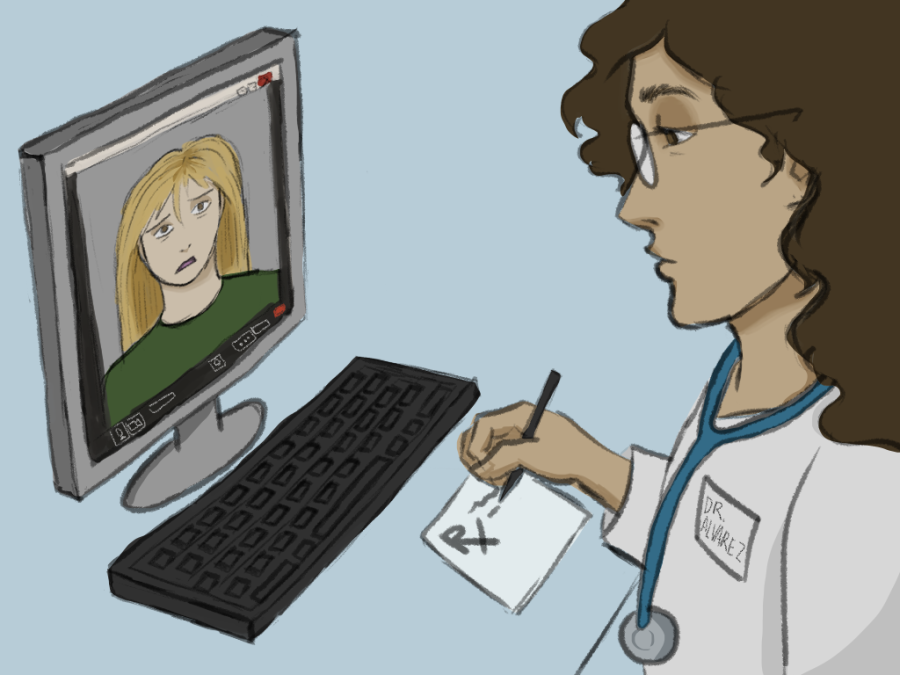DEA proposes stricter guidance on prescribing medications via telehealth
March 30, 2023
The Drug Enforcement Administration’s recent proposal to limit what prescriptions medical practitioners can issue during telehealth appointments may prevent students from receiving necessary medication, some advocates say.
Announced in late February, the new restrictions would limit the prescription of certain controlled medications such as Adderall through online telehealth appointments. Adderall is a schedule II medication that, although a safe drug with a valid medical use, comes with a high risk of abuse, according to the DEA. The new restrictions aim to curb the opioid epidemic, as other schedule II medications include opioids such as Oxycodone.
Currently, UT students are able to get prescriptions for most medications through an in-person or telehealth appointment, said Terrance Hines, executive director and chief medical officer for University Health Services. For medications such as Adderall, students must initially consult with the University Counseling and Mental Health Center before follow-ups can continue through UHS, which can be done through telehealth.
If the proposal stands, the restrictions would go into effect after the scheduled end of the COVID-19 public health emergency on May 11. Hines said telehealth became a wider practice during the pandemic.
“There’s certain things that work well in telemedicine,” Hines said. “Certainly throughout the pandemic, (for) people who had COVID … we wanted to not expose them to other people and so keeping them at home and doing that visit by telemedicine was helpful for people who maybe are challenged in terms of getting to the clinic.”
However, the new restrictions require an in-person appointment to have schedule II medications prescribed. The restrictions would make it more difficult for disabled students to treat conditions requiring these medications, said Emily Hardeman, vice president of the Disability Advocacy Student Coalition.
“For students who have physical disabilities, transportation and getting to a physical office can be a roadblock for them being able to be seen by a practitioner in person,” said Hardeman, a special education graduate student. “Coordinating (in-person appointments) with students’ schedules can be really challenging for all students, but especially for students with disabilities.”
Hardeman said the benefits of telehealth appointments go beyond just aiding students with disabilities, however.
“For students without vehicles, it’s also removing that barrier,” Hardeman said. “In terms of scheduling, it takes away that barrier because you can often in between classes go into a meeting room somewhere or a quiet space and have a telehealth appointment, meet with your provider and then continue on with your day.”
DEA administrator Anne Milgram said in the announcement that new guidelines aim to expand telehealth while also preventing over-prescription.
“The permanent expansion of telemedicine flexibilities would continue greater access to care for patients across the country, while ensuring the safety of patients,” Milgram said.
However, Hardeman said she does not understand how the restrictions would protect the safety of the public. She said DASC is currently monitoring legislation and working to organize more transportation for students currently unable to access in-person appointments.
“The pandemic has really changed the landscape of the medical community in terms of how doctors are able to see their patients and how individuals are able to get access to medical care,” Hardeman said. “I definitely think it’s a sustainable practice.”












